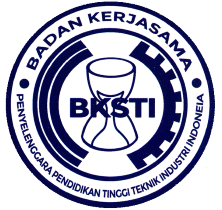PENCEGAHAN DEMAM BERDARAH PADA MASYARAKAT DUSUN MONGKRONG GUNUNG KIDUL
DOI:
https://doi.org/10.12928/spekta.v1i1.2696Keywords:
DBD, Aedes Aegypti, 3M, Death, PreventAbstract
DBD is an infectious disease by the Dengue virus, which is transmitted through the bite of Aedes aegypti mosquitoes. This disease's characteristics include sudden high fever accompanied by bleeding manifestations and the tendency to cause shock that can cause death. Until now, there is no cure for dengue fever or a vaccine. So the only way to prevent this disease is to break the chain of transmission. The main factor of dengue fever in Indonesia is the Aedes aegypti mosquito. Another way to avoid dengue fever is the correct 3M plus method, namely 1. Close, cover all places that can hold water, both inside and outside the house. 2. Drain, drain water reservoirs such as bathtubs, aquariums, and flower vases two times a week. The mosquito metamorphosis cycle, from egg to adult mosquito, lasts 8-10 days. 3. Bury. Bury all objects that can hold water, such as used cans or plastic containers. However, in the 3M movement, which has been renewed to 3M plus, this third M is no longer recommended because it can cause soil pollutionReferences
Depkes RI. (1993). Keputusan Direktur Jenderal Pemberantasan Penyakit Menular dan Penyehatan Lingkungan Pemukiman Tentang Persyaratan Petunjuk Teknis Tata Cara Penyehatan Lingkungan Rumah Sakit.
Husna, R. N., Wahyuningsih, N. E., & Dharminto, D. (2016). Hubungan Perilaku 3m Plus Dengan Kejadian Demam Berdarah Dengue (Dbd) Di Kota Semarang (Studi Di Kota Semarang Wilayah Atas). Jurnal Kesehatan Masyarakat (e-Journal), 4(5), 170-177.
Lloyd, L. S., Winch, P., Ortega-Canto, J., & Kendall, C. (1994). The design of a community-based health education intervention for the control of Aedes aegypti. The American Journal of Tropical Medicine and Hygiene, 50(4), 401–411.
Parks, W.J., Lloyd LS. (2004). Planning Social Mobilization and Communication for Dengue Fever Prevention and Control: A Step-bystep Guide. Geneva: World Health Organization.
Pérez-Guerra, C. L., Zielinski-Gutierrez, E., Vargas-Torres, D., & Clark, G. G. (2009). Community beliefs and practices about dengue in Puerto Rico. Revista Panamericana de Salud Pública, 25, 218–226.
Pujiyanti, A., & Trapsilowati, W. (2010). Pengetahuan, Sikap Dan Perilaku ibu Rumah Tangga Dalam Pencegahan Demam Berdarah Dengue Di Kelurahan Kutowinangun, Salatiga. Jurnal Penyakit Tidak Menular Indonesia, 2(2), 102-115.
Sciortino, R. (2010). Achieving contraceptive security and meeting reproductive health needs in Southeast Asia. Bangkok, Thailand: Asia Pacific Alliance for Sexual and Reproductive Health and Rights.
Soegijanto, S. (2016). Kumpulan makalah penyakit tropis dan infeksi di Indonesia (Vol. 5). Airlangga University Press.
Spiegel, J., Bennett, S., Hattersley, L., Hayden, M. H., Kittayapong, P., Nalim, S., … Gubler, D. (2005). Barriers and bridges to prevention and control of dengue: the need for a social--ecological approach. EcoHealth, 2(4), 273–290.

Downloads
Published
How to Cite
Issue
Section
License
Copyright (c) 2020 Alfian Rahmawan, Farid Ma'ruf

This work is licensed under a Creative Commons Attribution-ShareAlike 4.0 International License.
Authors who publish with SPEKTA (Jurnal Pengabdian Kepada Masyarakat: Teknologi dan Aplikasi) agree to the following terms:
- Authors retain copyright and grant the journal the right of first publication with the work simultaneously licensed under a Creative Commons Attribution License (CC BY-SA 4.0) that allows others to share the work with an acknowledgment of the work's authorship and initial publication in this journal.
- Authors are able to enter into separate, additional contractual arrangements for the non-exclusive distribution of the journal's published version of the work (e.g., post it to an institutional repository or publish it in a book), with an acknowledgment of its initial publication in this journal.
- Authors are permitted and encouraged to post their work online (e.g., in institutional repositories or on their website) prior to and during the submission process, as it can lead to productive exchanges, as well as earlier and greater citation of published work.

This work is licensed under a Creative Commons Attribution-ShareAlike 4.0 International License.












